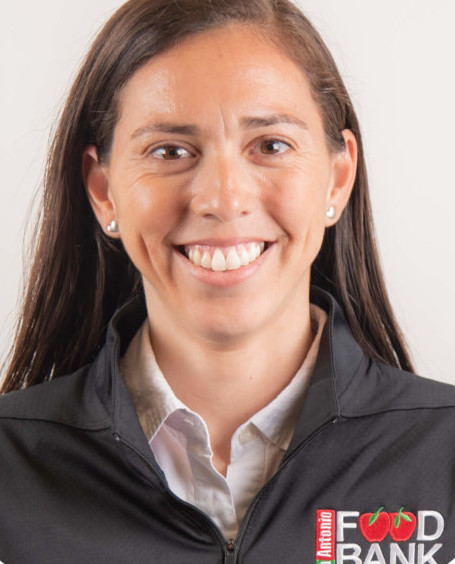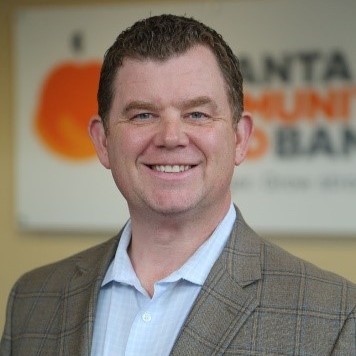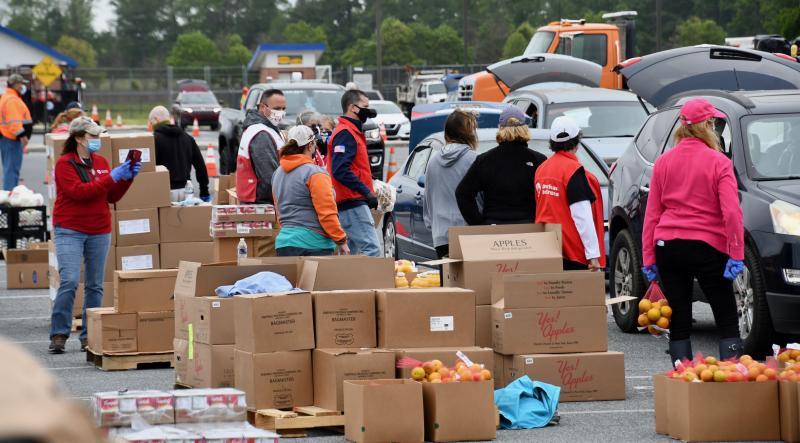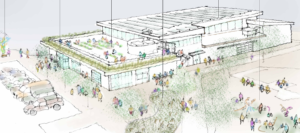Besides sourcing food, giving it out is arguably the most important thing a food bank does. But there does not seem to be general agreement on how best to do it.
Mass drive-through distributions, ushered in by Covid, continue at some food banks, but have been phased out at others. Strategies around traditional pantry networks are evolving, and technology is supporting new ways of distributing food, but with varying levels of uptake.
“There’s not a one-size-fits-all approach,” said Melanie McGuire, Chief Programs Officer at San Antonio Food Bank. “We want to make sure that we’re creating services that meet our clients’ needs, but that doesn’t mean that there’s a cookie-cutter approach.”

San Antonio Food Bank, which became somewhat of a poster child for large drive-through distributions during the pandemic, continues to offer them. Of the six million pounds of food it distributes every month, about 2.5 million (or around 42%) goes through twice-monthly mass distributions held at various schools and other locations that serve up to 1,500 or 1,600 families at a time. That 2.5 million also includes food distributed to 150 to 175 families daily through its two-year-old “curbside” program that lets people drive right up to the food bank at an appointed time to receive food.
The food bank was an early adopter of the Meal Connect for Service Insights software from Feeding America, which lets clients find and register for convenient food resources via a front-end interface called FreshTrak. On the back end, the system helps the food bank better understand who it’s serving, how much food it needs, and what types of additional services might be appropriate to offer at particular distributions.
Using the system, San Antonio Food Bank can better complement the work of its 840 or so agency partners (about 250 of which are traditional pantries), which distribute about 35% of the food bank’s total monthly food output. “It’s a really great way to help support areas where we may have higher demand than our agencies can provide,” McGuire said.
Atlanta Community Food Bank, meanwhile, is much more focused on using its network of more than 700 partners to distribute food. A centerpiece of the food bank’s five-year strategic plan is to provide more consistent, frequent, convenient and equitable access to food so families can redirect their resources away from food and toward other needs. “We want to be great at increasing access so people have a transformational amount of food resources to help them build financial stability,” said Kyle Waide, President and CEO.
Getting people to access charitable food in a way that would be transformational to their budgets means the food bank needs to ensure a “really awesome” experience at the pantry, Waide said. That means having pantries open for longer hours, on more days of the week, with the ability to schedule pick-up times or even order food in advance. “We want to continue to invest in a more compelling service environment that is empowered with technology tools and that gets us ever closer to our neighbors,” Waide said.

The food bank has already invested millions of dollars into equipping pantries with freezers, coolers and other capacity builders, such as access to more volunteers through a partnership with a local volunteer service organization. The food bank is also segmenting its pantries to identify which ones are well-equipped to provide a transformational experience and which might require more guidance or be responsive to incentives or grants. “How many of them have aspirations to invest in the way we’re imagining?” Waide said.
In Waide’s view, mass distributions are great in emergency situations, but do not lend themselves to frequent, convenient and consistent access to food. Even once the food bank finishes building out a network of up to eight large pantries (called Community Food Centers) that it will own and operate, it still will be directly distributing only 8% to 9% of the total amount of food it hands out. “The vast majority will continue to go through that partner network of ours,” he said.
Food Bank of Delaware phased out monthly mass drive-through distributions at the end of 2022, but now is strategically folding a few back in. When pandemic-era emergency SNAP allotments ended this winter, the state’s department of health stepped up to cover the costs of mass distributions during the spring, until the summer EBT program kicked in. The food bank will revive mass distributions again in the fall when families need help covering back-to-school and holiday costs, said Kim Turner, Communications Director.
She explained, “We wanted to move away from them because people travel further distances and we want to encourage people to go to the food pantry that might be right in their community.” (The food bank also offers daily mobile pantries that serve up to 100 or so people.) However, the food bank refrains from publicizing smaller pantry-led distributions too much, for fear of creating traffic snarls. “It’s a balance of making sure people are aware of the services, while keeping in mind the capacity of our small partner pantries,” Turner said.
Greater Pittsburgh Community Food Bank is taking a multi-pronged approach to distribution, continuing with a couple of large-scale monthly distributions, while also taking concrete steps to improve its pantry network. “I think it’s really important to have a hybrid approach,” said Jordan Hartman, Distributions Manager.
The food bank runs two mass distributions every month at two locations, which serve up to about 900 cars at a time. It has made ongoing efforts to improve the way it registers people for the distributions, including having people pre-register (difficult), having volunteers with iPads do registrations on site (logistically overwhelming), and issuing small plastic cards that can be scanned on site (still a work in progress), Hartman said.
On the pantry side, it is working to be more intentional about the types of partnerships it brings on. A new food access innovation team, launched about a year ago, is charged with ensuring new agencies will be effective partners, while also filling gaps in service. “It’s being a little bit strategic with what kind of new partnerships you want to do, based on the services that are already in that community,” Hartman said. The team is also spearheading a digital transformation initiative aimed at helping partner agencies improve their websites, develop social media strategies, or upgrade their digital fundraising through projects intended to last up to four months.
Certainly, no food bank has taken an all-or-nothing approach, fully embracing one method of distribution over another. Most are embracing all or many of the options available to them, though clearly there are differences of degree. “With Covid, we all scaled up because we needed to,” McGuire of San Antonio Food Bank said. “Some of us will continue down that path and others may have other strategies that are just as effective for their communities. And that works great too.” – Chris Costanzo
Like what you’re reading?
Support Food Bank News
This article was made possible by the readers who support Food Bank News, a national, editorially independent, nonprofit media organization. Food Bank News is not funded by any government agencies, nor is it part of a larger association or corporation. Your support helps ensure our continued solutions-oriented coverage of best practices in hunger relief. Thank you!
Connect with Us:










